Czechoslovak armored vehicles of the interwar period. Part I
Škoda-fiat torino
The military wanted to get a new armored car as soon as possible. One way to reduce the time of creation and construction of machines was the use of the finished chassis. This is the path that Škoda’s engineers took. Shortly before that, Czechoslovakia began to purchase Italian trucks Fiat 18BL, which were recognized as the most convenient base for a promising armored car. It was because of the use of the Italian chassis that the first Czechoslovak armored car received the characteristic name Škoda-Fiat Torino.
The base chassis of the Škoda-Fiat Torino armored car had the wheel formula 4х2. The front wheels were single and the rear wheels double. The suspension used leaf springs. When converting trucks into armored cars, tires were replaced with tubeless ones. The chassis was equipped with a four-cylinder gasoline engine Fiat 64CA 35 horsepower. Manual transmission with a four-speed gearbox through the driveshaft transmitted torque to the rear axle.
In accordance with the popular ideas of the time, the Škoda-Fiat Torino project meant equipping the base chassis with an original armored body. The basis of the hull was a frame on which armor plates with a thickness of 5-6 mm were fastened with the help of bolts and rivets. The forehead and hull sides were supposed to be made of thicker armor, and 5-mm sheets should be used in the stern, roof and towers.
The layout of the internal volumes of the armored hull was standard for armored vehicles of the interwar period. In front of the hull was the engine compartment, which actually was an armored hood. The entire middle and rear of the hull were set aside for the fighting compartment with jobs for the entire crew of five. The crew had to get into the car through a large door on the left side. To monitor the situation, the driver could use large hatches in the front sheet, covered with an armored tape. In addition, on the sides and stern of the machine there were additional inspection hatches with flaps.
The armament of the Škoda-Fiat Torino armored car consisted of two Schwarzloze MG.08 machine guns of 7,92 mm caliber. Machine guns were placed in the towers on the roof of the car. To increase the horizontal sectors of the shelling, we had to place the towers in a special way: the left one was in front of the right one.
The Škoda-Fiat Torino armored car was not too large and heavy. Its length did not exceed 5,5 meters, the width was equal to 2 meters, and the total height on the roof of the towers reached 2,65 m. The combat weight of the armored car was 6,9 tons.
The prototype of the Škoda-Fiat Torino armored vehicle was ready in January 1920, and its tests soon began. The base chassis of Italian production allowed the armored car to accelerate on the highway to 15 km / h. The fuel supply was enough for 250 kilometers. The firepower of two machine guns was high enough for the end of the tenths of the last century. According to its characteristics, the Škoda-Fiat Torino was not inferior to foreign equipment of this class.
According to the test results, in the spring of 1920, the Czechoslovak military department ordered a batch of 12 new armored vehicles, including a prototype, to Škoda. The 12 armored vehicles received tail numbers from 3 to 14 and were sent to the troops. In general, the first Czechoslovak armored cars arranged the military, although the overall imperfection of the design did not add ease of operation. A dozen Škoda-Fiat Torino armored cars were used before 1925, after which most of them were written off. The last armored cars of this model ceased service in the 1929 year.
Praga R-4
In the same year, the company Praga began to develop its armored car, but the armored car R-1919 was not intended for the Czechoslovak army. Prague engineers developed a new armored vehicle for the sale of Romania, where it was to be used by the police.
As a basis for the new armored vehicle, Praga has chosen a self-developed truck. According to other sources, the Fiat 4BL chassis was used in the R-18 project. The base chassis of the new armored vehicle had a wheel formula 4х2 and was equipped with a petrol engine with an 26 horsepower. The engine and driving rear wheels were linked by a mechanical transmission. Interestingly, the armored car for the Romanian police kept the wheels of the base truck. Apparently, the authors of the R-4 project believed that the wheels with spokes and tubeless tires would be suitable for use on police armored vehicles.
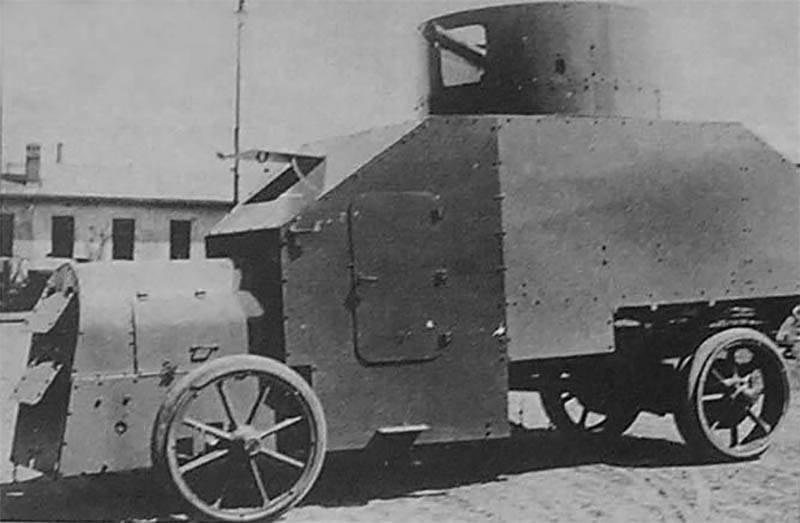
On the base chassis of the combat vehicle installed armored hull of the original design. The use of the truck chassis affected the hull layout, which is why the Praga R-4 armored car looked like many other cars of its class. The engine was covered with an armored hood with opening hatches in front of the radiator and large hatches in the sides intended for maintenance. The inhabited part of the armored hull was assembled from several sheets set at an angle to each other. To increase the level of protection, the upper front sheet of the hull was located at a large angle to the vertical. The design of the armored hull used metal sheets with a thickness from 3 to 6 millimeters. This made it possible to protect the crew and units of the armored car from rifle bullets. weapons.
On the roof of the Praga R-4 armored car, there was a cylindrical turret with mounts for mounting a Schwarzloze MG.08 machine gun of 7,92 mm caliber. Due to the rather large volume of the fighting compartment, the machine-gun ammunition could reach 3-4 thousand cartridges.
The crew of the armored car consisted of four people. He had to get into the car through the doors in the sides. To monitor the situation, the R-4 armored car had several inspection slots in the sides and stern, and the driver had a relatively large closing hatch in the front hull plate.
The combat mass of the Praga R-4 armored car reached 4 tons. The approximate dimensions of the car are unknown, but information on the possible use of the chassis of the Fiat 18BL truck allows us to make some assumptions. Perhaps the Praga R-4 and Škoda-Fiat Torino armored cars had similar dimensions. On tests, the R-4 armored car was able to accelerate only to 20 km / h due to a weak engine.
According to some reports, in the 1919 or 1920, the first and last instance of the Praga R-4 armored vehicle was built. Soon he was handed over to the Romanian police. The further fate of the armored vehicle is unknown. The characteristics of the first Praga armored car were insufficient even for the very beginning of the twenties. Probably for some time, Romania used the purchased car, but later abandoned it.
Praga l
By the beginning of the twenties, it became clear that armored vehicles armed only with machine guns had ambiguous prospects. The firepower of such combat vehicles was not sufficient for the hypothetical armed conflicts in the near future. For this reason, all the leading countries began to develop armored vehicles with cannon armament. Czechoslovakia was not an exception, the designers of which created the Praga L. armored car.
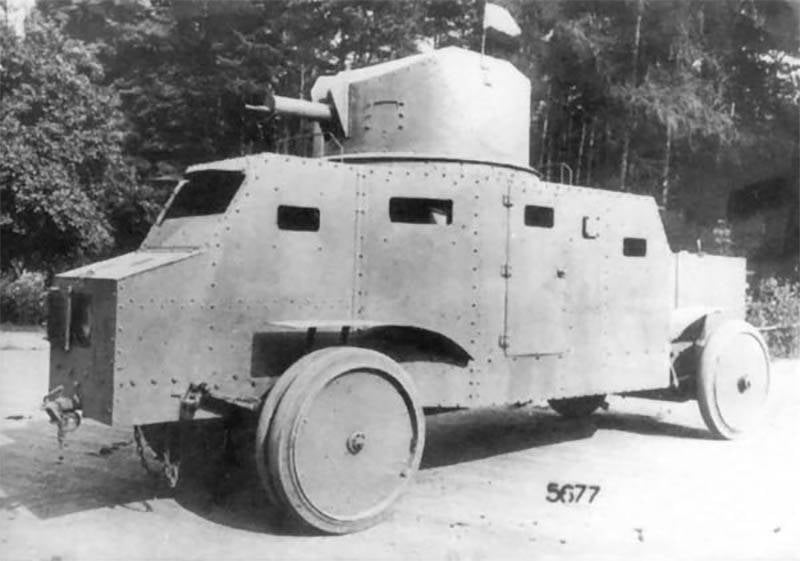
The name of the first Czechoslovak cannon armored car speaks directly to the applied basic design. The chassis of the Praga L truck was used as the basis for the armored car. The chassis with the 4x2 wheel formula was equipped with a hp 44 gasoline engine. and manual transmission. Wheels with solid tires mounted on a suspension with leaf springs. It was expected that such a refinement of the base chassis will positively affect the survivability of the combat vehicle.
An armored case assembled from 6 mm thick sheets was installed on the chassis. Wanting to ensure a high level of protection, ease of assembly and sufficient internal volume, Praga engineers gave the case a characteristic "faceted" shape. In particular, the middle part of the corps, in which the command and control compartments were located, had a large width in comparison with the front and aft ones. The sides of the hull were provided with doors opening backwards in the direction of travel. The left door was located near the workplace of the driver, the right - in the middle of the building, under the tower.
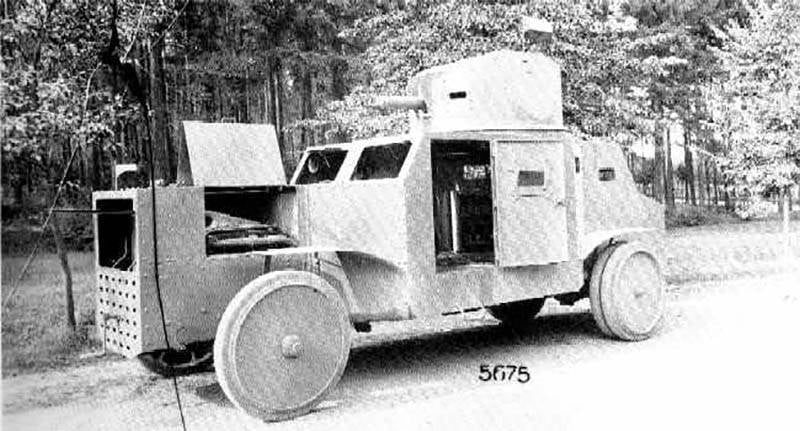
The crew of the armored car Praga L consisted of four people: two drivers, a commander and an arrow. One of the drivers was located in front of the manned volume and drove the car forward. The workplace of the second is located in the stern. It was assumed that the two drivers will provide high maneuverability on the battlefield. The commander was inside the corps of the armored car, the shooter - in the tower. There were inspection hatches with flaps on all the “edges” of the armored hull. Drivers had large hatches, providing a sufficient overview.
On the roof of the armored car Praga L there was a tower of complex shape, consisting of cylindrical sides and beveled flat sheets. On the front and rear sheets of the tower installed weapons, consisting of a single 7,92-mm machine gun and gun caliber 37 mm. Such weapons were powerful enough for the early twenties, but its deployment was unsuccessful. To attack targets in the same sector with the help of a gun and a machine gun, it was necessary to deploy the turret. In addition, the location of the breech parts of the weapon made it difficult to work in the cramped conditions of the tower. In the fighting compartment, it was possible to transport up to 100 shells for a cannon and up to 5000 cartridges for a machine gun.
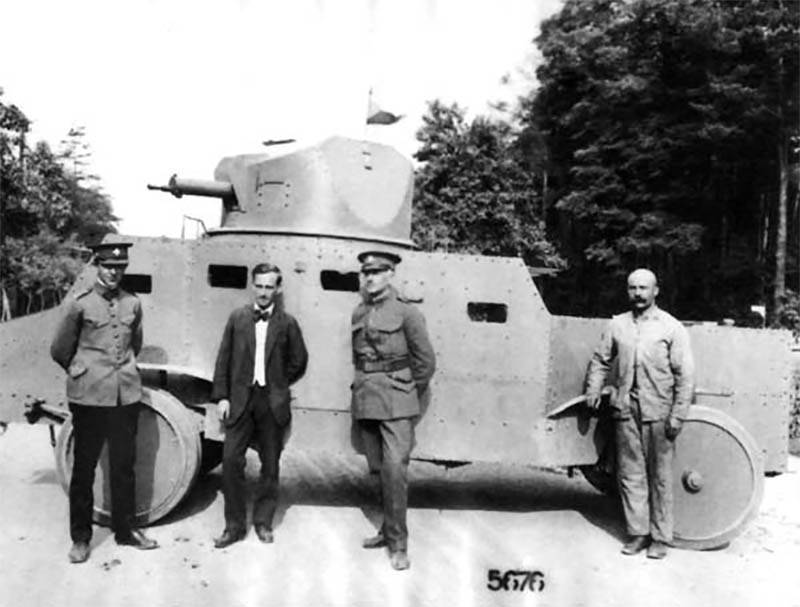
With a total length of about 5,1 meter, width of 1,95 m and height of 2,55 m, the Praga L armored car weighed about 5 tons. Having a fairly powerful engine, the first gun armored car of Czechoslovakia was able to accelerate to the highway to 40 km / h. Fuel should have been enough for 200 kilometers.
During the tests, the Praga L armored car showed all its pros and cons, and the latter turned out to be more. The advantages in the form of 37-mm guns and a fairly high speed on the highway were almost completely compensated for by low maneuverability, inconvenient positioning of weapons and other features of the project. Because of the solid tires, the armored car moved over rough terrain with great difficulty, and the need to rotate the turret for alternate firing of a cannon and machine gun could have a very negative effect on both the fighting qualities and the survivability of the car.
In general, the Praga L armored car was inferior even to the Škoda-Fiat Torino, which was created earlier. However, a single copy of a cannon armored car was purchased by the army. The Škoda-Fiat Torino armored cars had tail numbers from “3” to “14”, and the only Praga L received the designation “15”. As a front armored car cannon machine was used until 1925 year. After that, an armored car with a dismantled gun was used as a training. In the early thirties, the Praga L armored car was written off and disposed of.
Škoda PA-I
The first projects of Czechoslovak armored vehicles made it possible to form an approximate appearance of a promising vehicle of this class, with acceptable characteristics and devoid of serious flaws. In the first projects, the wheel formula 4х2, which could not provide sufficient running characteristics on rough terrain, was subjected to the greatest criticism. In the Škoda PA-I project (Pancierovy automobil, typ I - “Armored car, model 1”), the development of which started in 1921, it was intended to use all the existing experience and create an armored car that does not have the disadvantages of its predecessors.
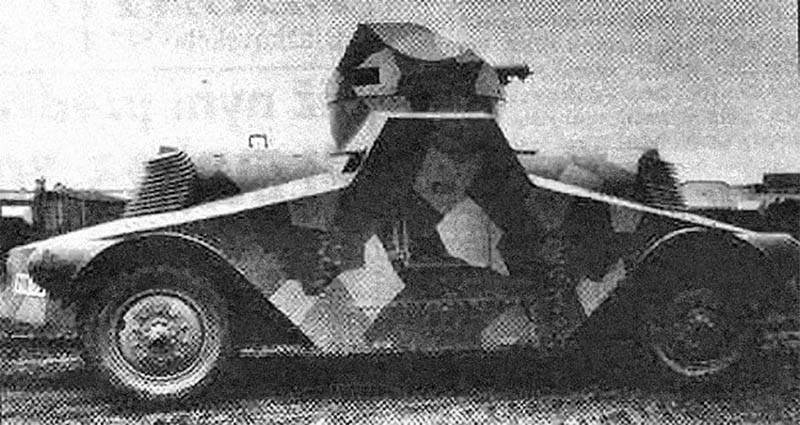
Especially for the new armored car was developed new biaxial all-wheel drive chassis. To ensure high performance, the chassis was equipped with a Hanomag WD-70 gasoline engine with an HP 70 power. In this case, however, tubeless tires made of hard rubber were supposed to be used in the undercarriage of the car. The wheels should have been equipped with leaf springs.
It was proposed to install an original hull armored hull on the base chassis. For several reasons, it was decided to make this unit symmetrical. Apparently, such a design provided an acceptable convenience for the placement and operation of two drivers. In addition, the original form of the body to some extent could facilitate its manufacture. The body was supposed to be assembled from armor plates with a thickness of 3 mm (roof and bottom) and 5,5 mm (all other parts).
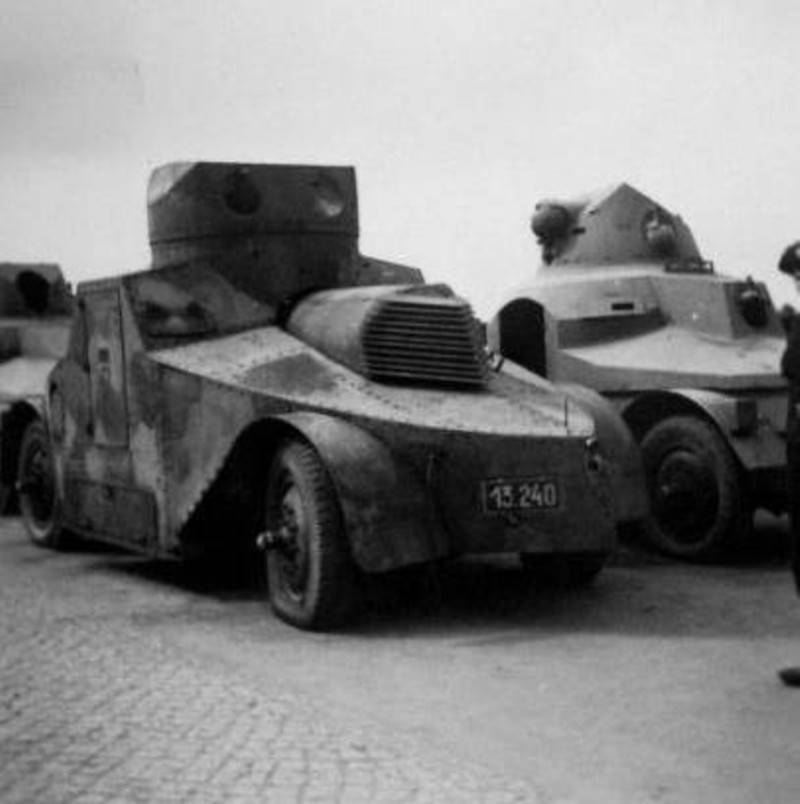
The Škoda PA-I armored car engine was located in the front of the chassis, and its radiator was raised above the frame and was closed with a hood of a characteristic shape with armored louvers in the frontal part. There was a similar housing in the back of the car, but it covered the internal volumes of the fighting compartment. In front of the crew compartment, to the right of the engine was the front control post with a workplace of one of the drivers. The second driver was placed behind the fighting compartment, at the left side of the car. Drivers could follow the road through the hatches in the front and aft hull sheets.
The crew could include up to six people. For landing in the car were two doors in the middle of the boards. The crew had to observe the surrounding space with several hatches in the sides and stern of the tower. In a combat situation, hatches needed to be closed with lids with viewing slits.
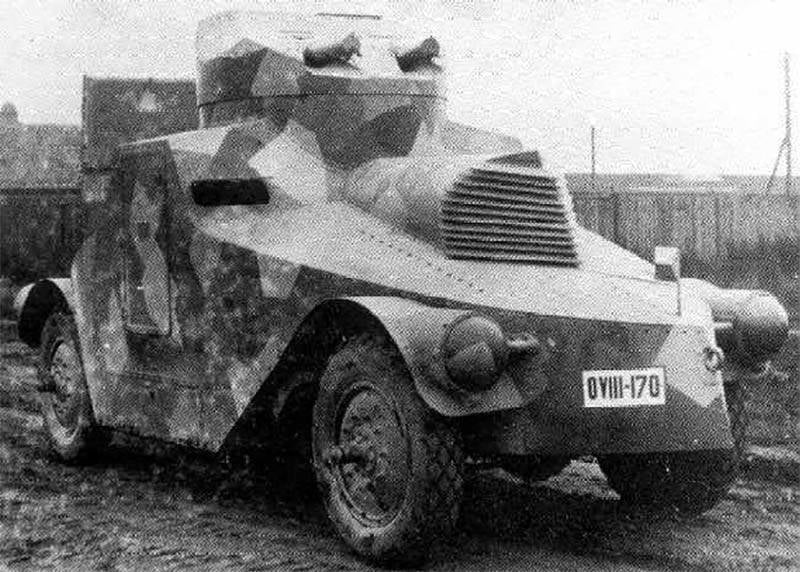
On the roof of the hull of the Škoda PA-I armored car, in its middle part, there was a rotating tower of complex shape, formed by a cylindrical base and a sloping roof. The armament of the armored car consisted of two MG.03 machine guns installed in two embrasures. Two shooters could simultaneously attack different targets located within their firing zones. For coarse horizontal pickup, it was necessary to turn the entire tower.
The Škoda PA-I armored car was larger and heavier than all the cars of its class, created in Czechoslovakia until the mid-twenties. His combat weight reached 7,6 tons. The length was 6,6 meter, width 2,26 m, height - 2,74 m. Despite the heavy weight of the machine, the 70-strong engine provided it with quite high performance. During the tests, the PA-I armored car was able to accelerate onto the highway to 80 km / h. One fueling was enough to overcome the way in 200 kilometers.
In 1922, Škoda received a contract for the construction of two armored vehicles of a new model, which were supposed to be sent for testing. Both cars were tested at the site and disappointed the military. The fighting compartment turned out to be too close for the crew to work comfortably, the armament from two machine guns was considered insufficient, and the engine overheated regularly due to the specific location. In addition, the review from the drivers' workplaces turned out to be too poor, which was facilitated by the small dimensions of the inspection hatches, the characteristic hood and casing, as well as specific hull lines. Because of this, driving an armored car was difficult, in some cases it could roll over.
The company Škoda issued a list of claims that need to be corrected. As for the two prototypes built, they were put into service. Machines with the designations "16" and "17" were sent to one of the drill units. PA-I armored vehicles have been used for some time together with other equipment of this class. After the appearance of a sufficient number of newer vehicles, Škoda PA-I armored cars began to be used as training machines. In 1932, both armored cars were sent to storage, where they stayed until the beginning of the 1940s. The fate of the machines is unknown. Most likely, they were disposed of as unnecessary.
On the materials of the sites:
http://forum.valka.cz/
http://aviarmor.net/
http://shushpanzer-ru.livejournal.com/
http://strangernn.livejournal.com/
http://tanksinworldwar2.com/
- Ryabov Kirill
- Czechoslovak armored vehicles of the interwar period. Part I
Czechoslovak armored vehicles of the interwar period. Part II
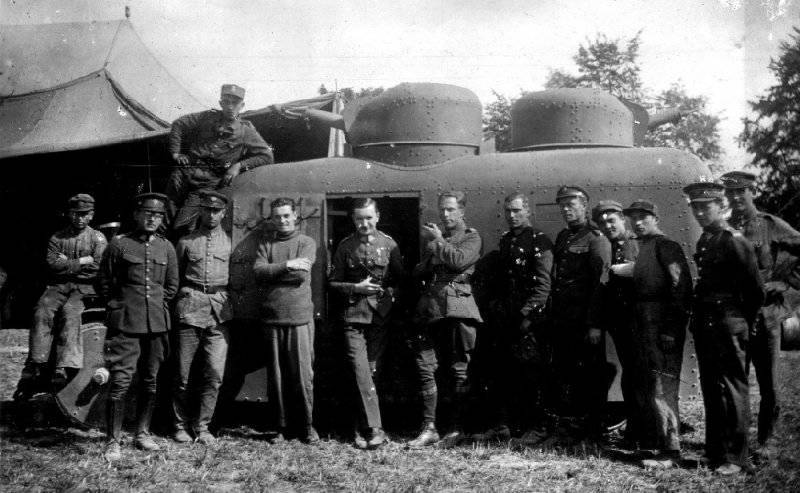

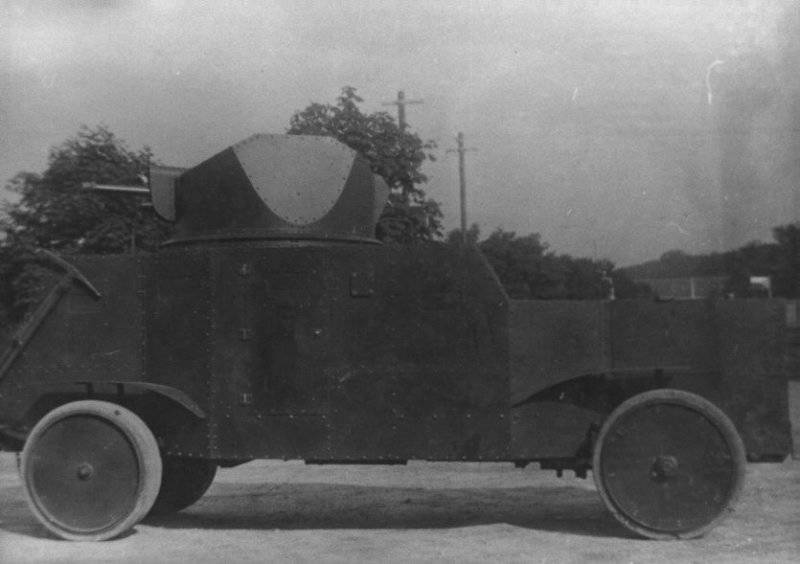
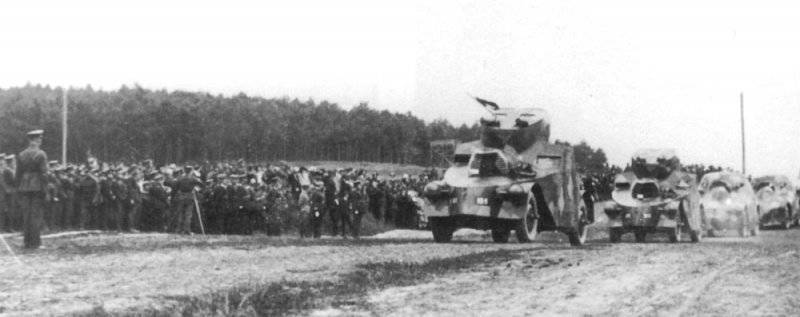
Information